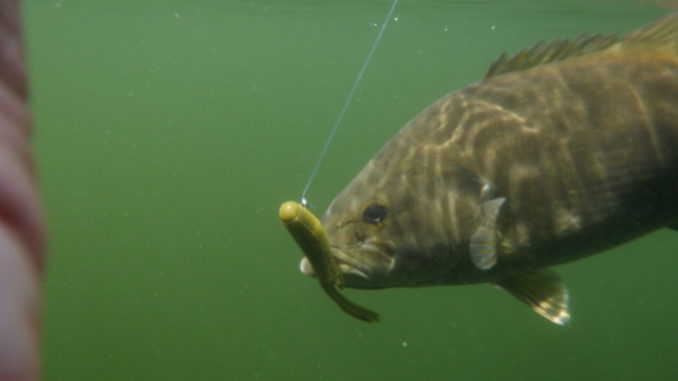
Take a fly rod or light spinning rod and do battle with a Tarheel State bronzeback
Fishermen who love the smallmouth bass travel widely, from the hills of northern Alabama to the Great Lakes to the wilds of Ontario, to catch their favorite fish. Aficionados of smallmouth do not have as far to go in North Carolina, and among the state’s hotspots for these game fish is the New River in the northwest corner of the state.
The New River and its tributaries, the North Fork and South Fork, rise in the mountains of Watauga, Ashe and Alleghany counties and snake through the northwestern corner of the state until flowing into Virginia and on into West Virginia, all the way to the Ohio River. For almost all of its length, it’s full of smallmouth bass, along with rock bass (redeyes), redbreast sunfish and the occasional muskellunge.
Kin Hodges, a fisheries biologist for the N.C. Wildlife Resources Commission, said smallmouth numbers were good all over the river and both of its tributaries the last time the Commission sampled the river with electroshocking equipment. The highest number of fish surveyed were in the North Fork, then the South Fork, and finally, in the main stem of the river from north of Sparta around the New River State Park and on into Virginia.
Hodges said the size of fish varies from year to year, depending significantly on water flows.
“When you look at the age structure on these populations, you often see huge year-classes formed during good flow years followed by relatively weak classes formed during sub-optimal flow years,” he said, nothing that because of the smallmouth’s relatively slow growth rate, good and poor year-classes will echo through fishing prospects in subsequent years.
Fishermen have a lot of options when it comes to the New and its tributaries, including tackle and transportation. Fly-fishing and spinning equipment will both produce plenty of fish, and up and down the rivers, ample opportunities exist for anglers to both float or wade.
Dr. Jim Kramer, a sports orthopedist from Greensboro, fishes the New River and its tributaries for smallmouth with fly-fishing tackle, going with a 9-foot, 6-weight rod and reel spooled with floating line. Long, delicate leaders are not required.
“I usually use a 7 1/2-foot leader, tapered down to 1X or 2X Seaguar Florocarbon,” he said. “Late in the summer when the water is low and clear, I might drop down to a 3X or 4X of the same material, but leader shy is typically not an issue.
“Topwater fishing is what I mostly do when I go smallie fishing. I use poppers, size 4 or 6. A Peeper Popper, Boogle Bug or a Black Ann Popper, those are my starting points. I like the rubber legged poppers tied by Jeff Wilkins in Greensboro. Sneaky Petes and deer-hair sliders are also good topwaters. A Chernobyl Ant is a good terrestrial pattern.”
Anglers need to adjust. Kramer said.
“When using poppers, be willing to change up presentation. Sometimes let it sit until the ring disappears. Sometimes erratic, quick jerks are more effective,” he said. “This works best when they are chasing minnows.”
When it comes to color selection, Kramer said, “Black on dark days. If the water is stained, chartreuse is a good choice. On clear days, white, yellow or polka dot red on white.”
If the smallmouth are not coming to the surface, Kramer said he’ll go with a streamer fly.
“My favorite is a gold Kreelex,” he said. “Otherwise, a Clouser Minnow pattern, size 2 or 4, a JJ Special, Hise’s Big Fly Fish, or Whitlock’s Near ‘Enuf Crawfish. Any crayfish pattern, really, should work. A sculpin pattern in green or brown or a black Wooly Bugger is good.”
Kramer believes most anglers do not fish streamers deep enough.
“I will often use a sink tip line,” he said. “It’s important — the streamer needs to get down, and a lot of fishermen don’t use interchangeable sink-tip heads.”
Roger Mabe and his grown son, Kerry, have fished the New River for years. They rely on 6 1/2- to 7-foot spinning rods and matching reels spooled with 6- to 8-pound line. A long rod with a limber tip makes long casts of light lures much easier; some anglers stick with ultra-light rigs despite their constraints.
“Last year, Kerry and I were out on the river, and he saw a fish chasing minnows. He had on a Jitterbug, and he gave it a sling and caught a 3 1/2-pound smallmouth.
The last couple of years, Mabe has made some changes in his fishing.
“I used to use a lot of minnows. I caught fresh bait out of the creek by the house, but nine out of 10 we caught on minnows had the hook so deep it was hard to get out without killing the fish. And we have not eaten as many as we used to.
“We still use lots of soft plastics on jigheads. A black head and chartreuse tail works good. And 4-inch Do-Nothing worms are good. Smoke color is good in the fall.”
Mabe uses jigheads between 1/8- and 1/4-ounce according to the current and the depth he’s fishing. He’ll also fish Do-Nothing worms or tubes on a hook without any weight. Small crankbaits around 2 1/2 inches long are good choices; his favorite is a small rebel in a color he calls “dirty white,” and he uses a Rebel Wee Crawfish, a favorite lure of stream smallmouth anglers everywhere.
Bill Shumaker of Charlotte insists a small Rapala, silver with a black back, is indispensable on the New River.
Across the country, stream smallmouth fans rely on in-line spinners like a Mepps or Panther Martin. Select the smaller sizes of in-line spinners. Sometimes in-line spinners with squirrel hair tails work best; sometimes the bare lure does the trick. Let the smallmouth make the choice.
DESTINATION INFORMATION
HOW TO GET THERE — West Jefferson in Ashe County and Sparta in Alleghany County are key cities along the course of the river. To reach Jefferson, take US 421 out of WInston-Salem just west the Blue Ridge Parkway and turn north on US 221 to Jefferson. To reach Sparta, take US 421 out of Winston-Salem, then north on I-77 and US 21. The river and its tributaries have plenty of access points around bridge crossings. The best access may be in New River State Park, through which the South Fork runs just downstream from its junction with the North Fork. The New River curls back and forth across the Virginia line, but a reciprocal license agreement exists between North Carolina and Virginia to permit fishermen to fish from the confluence of the North Fork and the South Fork to the mouth of the Little River in Grayson County, Va.
WHEN TO GO — Smallmouth bass fishing in the New River and its tributaries, the South Fork and North Fork, is especially good through the summer, and warm water temperatures give fishermen the option of floating or wading.
CANOE RENTALS — Zaloo’s Canoe Rental, Jefferson, 800-535-4027; New River Campground, Sparta, 336-372-8793.
GUIDES/FISHING INFO — Jeff WIlkens, Jeff Wilkens Fly Fishing, 336-944-3288; Marty Schaffner, Tri-State Angler, 336-957-4630 or www.tristateangler.com; New River Campground, Sparta, 336-372-8793.
ACCOMMODATIONS — Allegheny Inn, 341 North Main, Sparta, 336-372-2501; Harmony Hill Bed and Breakfast, 1740 Halsey Knob Rd., Sparta, 336-372-6888; New River Campground, US 21, Sparta, 336-372-8793; New River State Park, Sparta, 336-982-2587, www.ncparks.gov/Visit/parks/neri/main.php.
MAPS — DeLorme’s North Carolina Atlas and Gazetteer, 800-452-5931 or www.delorme.com.

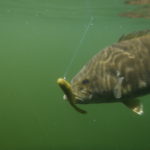
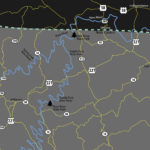
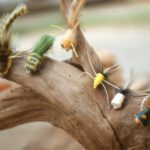
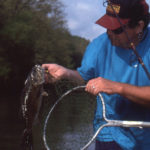



Be the first to comment